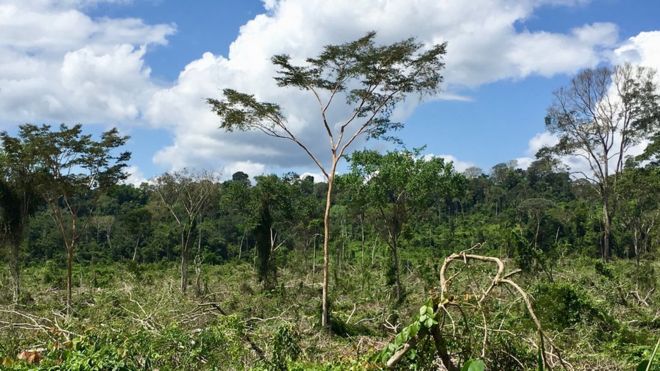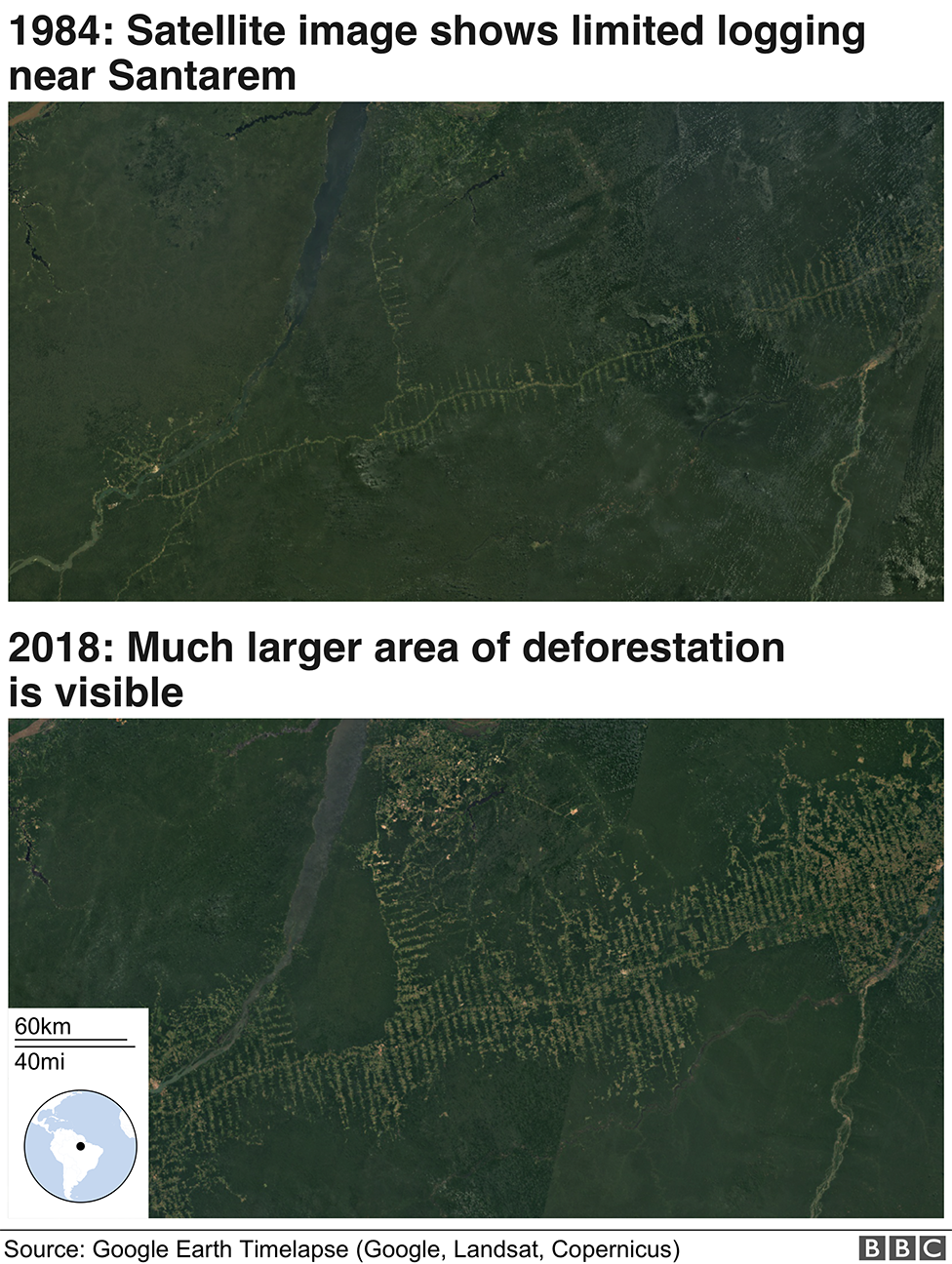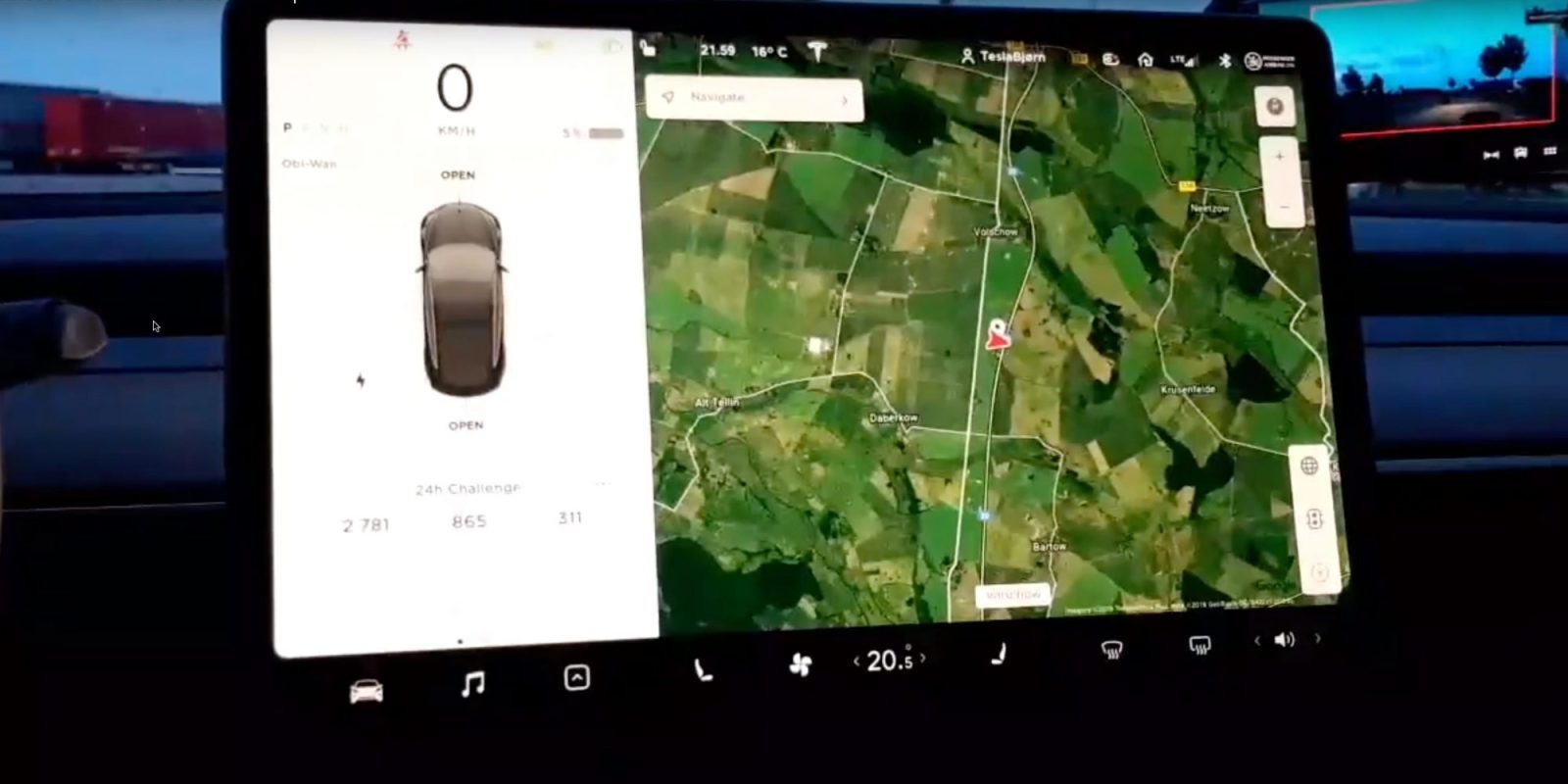Beef every day chops the Amazon away...
The cows grazed under a hot sun near a wooden bridge spanning a river in the Amazon. The quiet was occasionally broken by a motorbike growling along a dirt road that cut through the sprawling cattle ranch.
But the idyllic pasture was on land that the Lagoa do Triunfo ranch has been forbidden to use for cattle since 2010, when it was embargoed by Brazil’s environment agency Ibama as a punishment for deforestation. Nearby there were more signs of fresh pasture: short grass, feeding troughs, and fresh salt used to feed cattle — all in apparent contravention of rules designed to protect vital rainforest.
This vast 145,000 hectare ranch is one of several owned by AgroSB Agropecuária SA — a company known in the region as Santa Barbara. Located in an environmentally protected area, Lagoa do Triunfo is more than 600km from the capital of the Amazon state of Pará, on the western fringes of Brazil’s “agricultural frontier” — where farming eats into the rainforest.
An investigation by the Bureau, the Guardian and Repórter Brasil has found that cattle produced by Santa Barbara are being sold to JBS, the world’s biggest meat-packing company. JBS is the single biggest supplier of beef, chicken and leather globally, and exports fresh beef to Europe and about half of the corned beef eaten in the UK. In 2017, JBS said it had stopped buying Santa Barbara cattle, after it was fined $7.7 million for buying cows raised on illegally deforested land — but our investigation shows that is no longer the case.

The investigation found that last year the Lagoa do Triunfo ranch delivered hundreds of heads of cattle to some of Santa Barbara’s other farms for the final stage of fattening. Cattle was then sent from those farms to slaughter in JBS plants. Using GPS and publicly available maps and locations, reporters located cattle and pasture inside embargoed areas at Lagoa do Triunfo.
Continue reading: Revealed: How the global beef trade is destroying the Amazon — The Bureau of Investigative Journalism
The cows grazed under a hot sun near a wooden bridge spanning a river in the Amazon. The quiet was occasionally broken by a motorbike growling along a dirt road that cut through the sprawling cattle ranch.
But the idyllic pasture was on land that the Lagoa do Triunfo ranch has been forbidden to use for cattle since 2010, when it was embargoed by Brazil’s environment agency Ibama as a punishment for deforestation. Nearby there were more signs of fresh pasture: short grass, feeding troughs, and fresh salt used to feed cattle — all in apparent contravention of rules designed to protect vital rainforest.
This vast 145,000 hectare ranch is one of several owned by AgroSB Agropecuária SA — a company known in the region as Santa Barbara. Located in an environmentally protected area, Lagoa do Triunfo is more than 600km from the capital of the Amazon state of Pará, on the western fringes of Brazil’s “agricultural frontier” — where farming eats into the rainforest.
An investigation by the Bureau, the Guardian and Repórter Brasil has found that cattle produced by Santa Barbara are being sold to JBS, the world’s biggest meat-packing company. JBS is the single biggest supplier of beef, chicken and leather globally, and exports fresh beef to Europe and about half of the corned beef eaten in the UK. In 2017, JBS said it had stopped buying Santa Barbara cattle, after it was fined $7.7 million for buying cows raised on illegally deforested land — but our investigation shows that is no longer the case.

The investigation found that last year the Lagoa do Triunfo ranch delivered hundreds of heads of cattle to some of Santa Barbara’s other farms for the final stage of fattening. Cattle was then sent from those farms to slaughter in JBS plants. Using GPS and publicly available maps and locations, reporters located cattle and pasture inside embargoed areas at Lagoa do Triunfo.
Continue reading: Revealed: How the global beef trade is destroying the Amazon — The Bureau of Investigative Journalism







